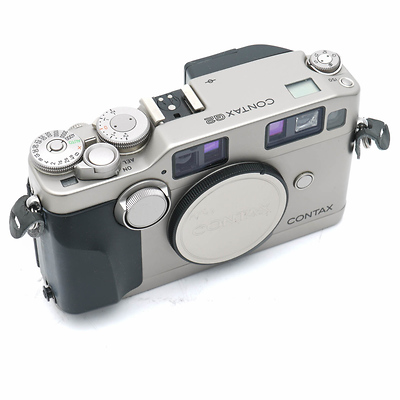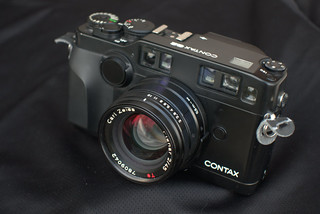

It’ll take up to 2GB SD cards these days, none of this SDHC fanciness here, they’ve got to be the older generation ones that have that terribly slow write speed. On my TVSd the LCD in the top left pretty much always reads 999 with a larger than 32MB card, which was the style as the time when it was released in 2002. The TVSd shares more of the T3’s look than any of the other Contax T models, but I guess they couldn’t just call it the the Contax T3 Digital Zoom – that would have been silly. The TVSd is much smaller than the TVS or TVS II as it’s got to fit a film plane in there, film canister and CR2 batter along with the requisite electronics. The form factor for both units does stay largely the same: mode dial to the bottom right of the top plate, LCD opposite, flash in the top left of the front panel, viewfinder in the middle, even the lens fully extended is of a similar size and shape.Īs you can see from the photos the two main parallels: both models have a zoom lens and that they’re both made from titanium. I thought I’d take this opportunity in the product photos to compare the TVSd to it’s older and more capable brother, the TVS (film). The camera itself is a lovely size and fits in the hand well, like the other Contax models it’s been designed from a users point of view and is really, really easy to use for daily shooting even in my large-ish man hands. The finder itself is dull, just the like the TVS before it but remains usable enough.

No doubt borrowed from the other Contax zoom capable film cameras Contax G2 and TVS before it (even though this is digital, of course) it makes you actually want to use the viewfinder.

Sporting a sharp-enough Carl Zeiss Vario Sonnar 35-105mm zoom lens the TVSd also has one of those rad optical viewfinders that zooms as you zoom the lens in, a pretty nifty feature. I’m not one to hate on the CCD and the colour/tone combination that they produce, in fact I’m a fan it’s why I loved my Epson R-D1s so much! But, to my mind people can’t be out there hunting this camera down for it’s tech specs, they’re so out of date it’s laughable. The little TVSd is a pretty well featured fun box from 2002, even with it’s tiny1/1.8″, 5 Megapixel CCD sensor ( that’s an above 4.5x crop factor, baby) it can pump out some glorious looking files. Digital is just going to be WAY easier for you. It’s not a terrible camera to use, in fact it’s actually pretty good! I get the nostalgia factor and that for a lot of people film is just way too costly and fiddly of a venture, especially if you’re a mid-twenties hipster shooting your friends drinking coffee and smoking. I don’t really know, maybe a combination of brand hype and nostalgia. As of writing this piece in mid-2018, the price of the lowly Contax TVS Digital (TVSd) has now skyrocketed to $300-600 or more if it’s a black model – I snagged mine for $100 about three or four years ago before all the T2/3 hootenanny really spun off the planet.īut, why is a 16 year old digital camera so desirable? In recent years though anything with a Contax badge on it has drastically increased in price, due largely to the now infamous and much desired T2 and T3 film compacts (and Kendal Jenner FFS). I bought it on a whim a few years back because I wanted a little compact camera I could beat up, but something that was nice to use and wouldn’t break the bank.

#Contax g2 digital back how to#
Boasting a massive 1/1.8″, 5 Megapixel CCD sensor this little titanium box was one of the last models pumped out of the Kyocera factories sporting the Contax badge. In 2002 I was just barely talking to girls and trying to figure out how to pass my Math classes, so this little Contax was WAAAAY off my radar when it was released. The Contax TVS Digital is a high-end compact camera within the legendary T range and the only digital model of the group.


 0 kommentar(er)
0 kommentar(er)
